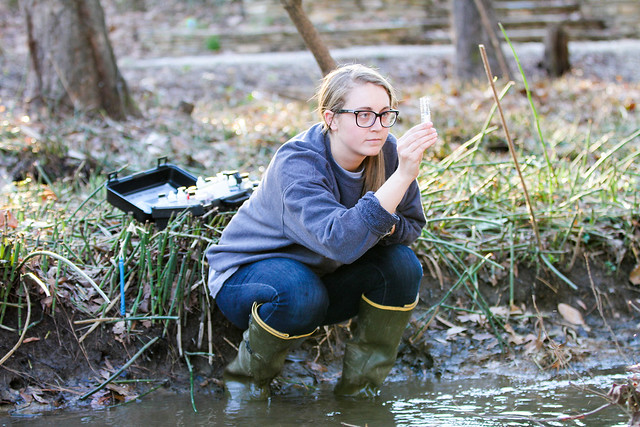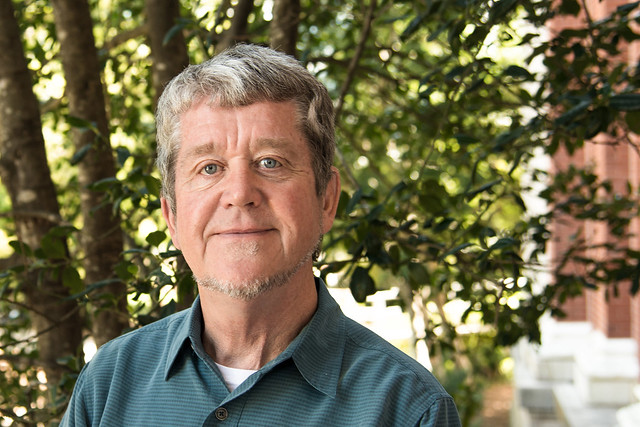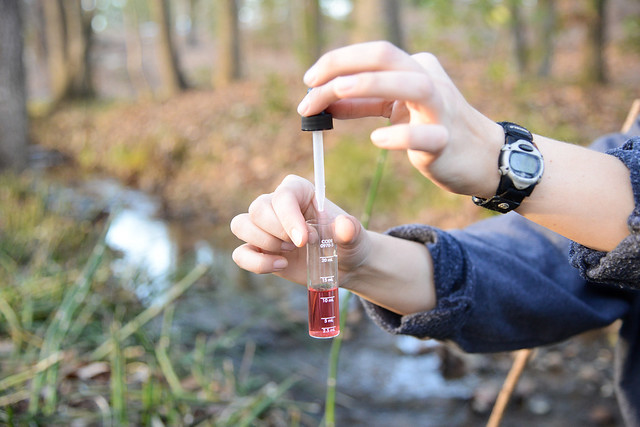Watching our waters: Alabama Water Watch celebrates 25 years of citizen action
Article body
Alabama's miles of rivers and streams would circle the earth five times, and for the past 25 years, a devoted group of citizen volunteers has worked to protect these bountiful water resources.
The group is Alabama Water Watch, and as it celebrates a quarter-century of service, its challenge has never been greater: monitoring more than 132,000 miles of rivers and streams as well as more than 300 species of freshwater fish, along with more abundant crayfish, snails, turtles and mussels than any other state.
The mission of Alabama Water Watch, which was established in 1992 supported in part by federal grant dollars awarded through the Alabama Department of Environmental Management, is to improve both water quality and water policy through citizen monitoring and action.
Over the years, the innovative program, based at Auburn University, has become a national model for citizen involvement in watershed stewardship, largely because of its three interrelated components—citizen monitoring groups, a participating university and a nonprofit association.
"Many people didn't think we would last a year because they thought Alabamians were not interested in their water or their environment," said Bill Deutsch, Alabama Water Watch co-founder and research fellow emeritus in Auburn University's School of Fisheries, Aquaculture and Aquatic Sciences.
Silencing the skeptics
Deutsch directed Alabama Water Watch for its first 22 years and remains heavily involved in the association. He enjoys reminding those who were skeptical in the beginning about the longevity and effectiveness of Alabama Water Watch.
"Interest in the program exploded, and over the past 25 years, we've worked with more than 300 community groups throughout Alabama," he said. "Water Watch has trained 7,400 citizen monitors who have monitored 2,300 sites on streams, rivers, lakes, bays and bayous throughout the state and submitted more than 86,000 water quality records to the Water Watch online database."
Alabama Water Watch uses EPA-approved monitoring plans with a community-based approach to train citizens to monitor conditions and trends of their local waterbodies, Deutsch said. With a "data-to-action" focus, the group helps volunteers collect, analyze and understand their data to make positive impacts.
"It's all voluntary, covering 800 bodies of water," Deutsch said. "This ‘citizen science' only grows in value over time because the baseline of information gets larger."
Water Watch encourages citizens to ask if their waterbody is getting better or worse, and why, he said.
"This is a very simple but deep question," he said. "What are the conditions of my water? Can it support healthy life? Is it safe for swimming? Can I drink it or fish in it?"
The data that has been and continues to be collected is used by various organizations, consulting firms and universities throughout the state and nation, Deutsch said.
Protecting the endangered
The program also has helped in the conservation of some of the rarest creatures on the planet, he said. The only known existence of the endangered watercress darter, for example, is in five springs near Birmingham, and those bodies of water are currently being monitored.
As Alabama Water Watch celebrates its 25th year, it is setting its sights on connecting with a new, younger audience through environmental education, Deutsch said.
"When I began Alabama Water Watch, we thought the primary volunteers would be the 20-somethings, but in fact, it was the opposite," he said. "It was largely driven by retirement-age people living on our big reservoirs. The age of volunteers kept climbing, and it got to the point to where we were ‘graying' and people were having to quit."
Too many children today are staying indoors and playing on their computer screens, Deutsch said.
"The connection to the natural world is getting dangerously weak, and children are afraid of being outdoors," he said.
This educational effort is needed now more than ever, especially considering budget cuts at both the state and federal levels, said Eric Reutebuch, who has served as Alabama Water Watch director since Deutsch's retirement in 2014.
Building Awareness
"We're reaching out to our youth, but we're also trying to spread the message to everyone," Reutebuch said. "Alabama has some of the most endangered species on the planet, and a lot of people don't know that. We're reaching out to the general public and trying to make them aware of this truly exceptional resource that we need to care for."
In an effort to reach new audiences, Alabama Water Watch is partnering with the Alabama Cooperative Extension System through the 4-H Alabama Water Watch program.
"In a best-case scenario, many of the young people who are exposed at an early age will get out into the streams and creeks, actually seeing the critters there," Reutebuch said. "Hopefully, they will become aware of the aquatic environment and will become monitors into their adulthoods."
Just last year, 1,800 youth were educated and trained through the 4-H program, and nearly 90 adults were trained in Living Streams workshops. The 4-H program includes students in grades four through 12.
"We've always offered opportunities for educators to get involved, but we wanted to do even more," said Mona Dominguez, coordinator of Water Watch's 4-H program. "It made sense to partner with Alabama 4-H."
Alabama Water Watch's water testing is backed by EPA-approved protocols, Dominguez said.
"The 4-H curriculum is very flexible, so educators or teachers can tweak it however they need to make it work," she said. "Participants must be at least 16 years old to do independent monitoring. But if they have a teacher or volunteer who has gone through training, they can still collect data, and it'll be used."
Thorough training
4-H Alabama Water Watch offers many training programs throughout the year. With a workshop registration of $25 and completion of the program, volunteers will receive a certification as an Alabama Water Watch water monitor, a copy of Exploring Our Living Streams curriculum, access to the online Citizen Science Data Stimulation Tool, food and lodging during the workshop and more.
Operating under the umbrella of the Auburn University Water Resources Center, Alabama Water Watch receives support from multiple sources, including Alabama Extension, the Alabama Agricultural Experiment Station, grants from various governmental and private agencies, and contributions from individuals and groups throughout the state.
More information is available at AlabamaWaterWatch.org. Become a certified Water Watch monitor.
This article first appeared in the Auburn University College of Agriculture's alumni magazine, The Season.
Related Media
Media interested in this story can contact Communications Director Preston Sparks at (334) 844-9999 or preston.sparks@auburn.edu.
Auburn University is a nationally ranked land grant institution recognized for its commitment to world-class scholarship, interdisciplinary research with an elite, top-tier Carnegie R1 classification, life-changing outreach with Carnegie’s Community Engagement designation and an undergraduate education experience second to none. Auburn is home to more than 30,000 students, and its faculty and research partners collaborate to develop and deliver meaningful scholarship, science and technology-based advancements that meet pressing regional, national and global needs. Auburn’s commitment to active student engagement, professional success and public/private partnership drives a growing reputation for outreach and extension that delivers broad economic, health and societal impact.








